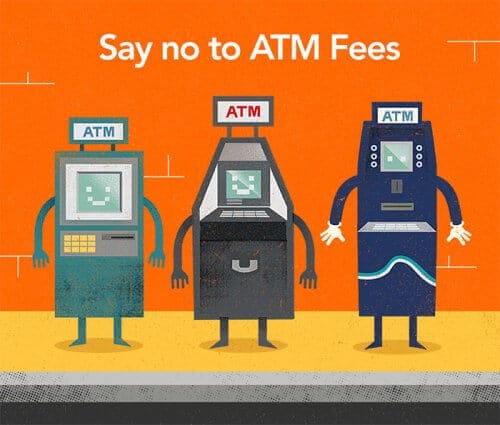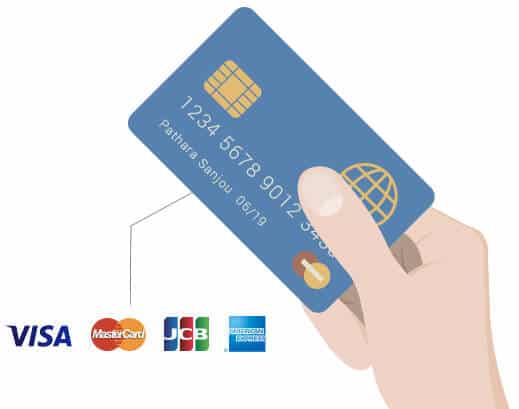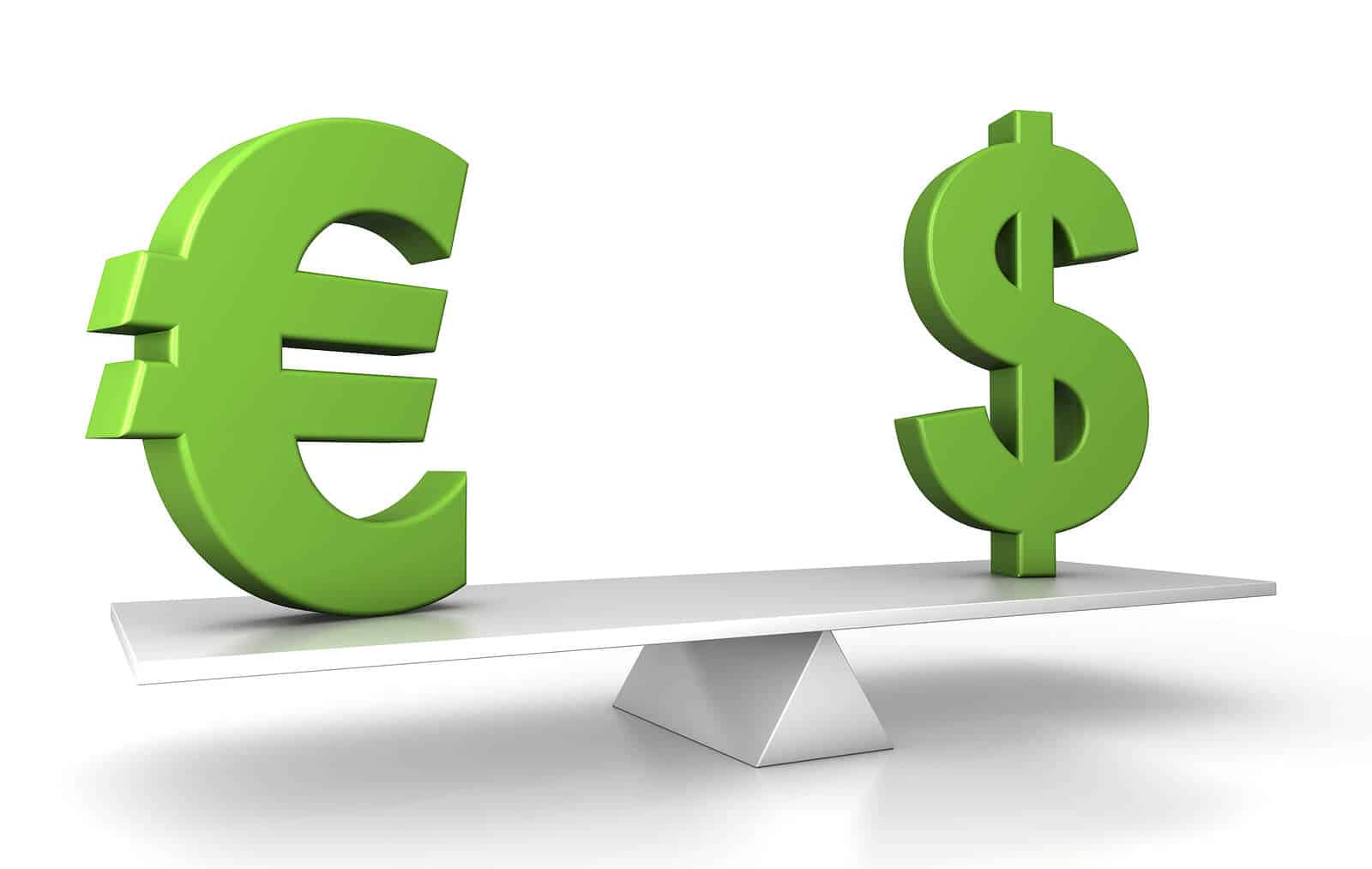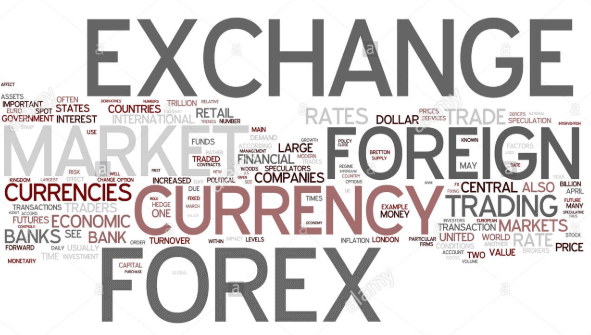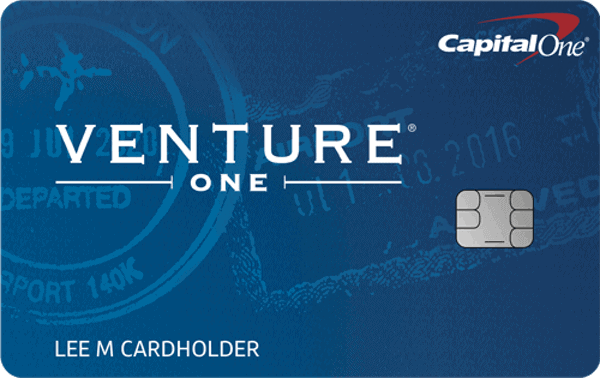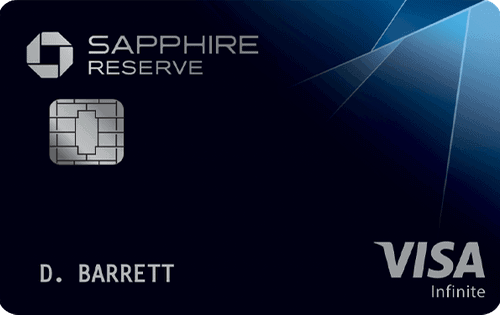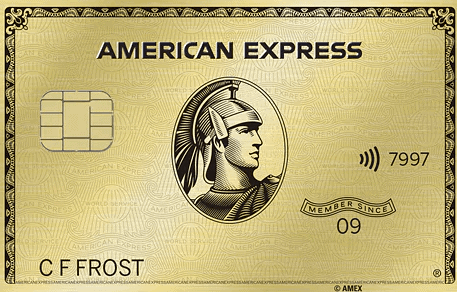Best No Foreign Transaction Fee Credit Cards 2020
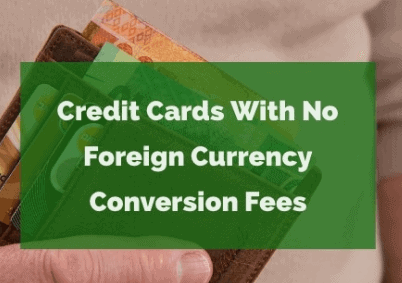
When traveling abroad – whether that’s for business or pleasure, you need to make some serious considerations regarding foreign transaction fees. The fees that you pay will not only depend on the type of transaction – such as ATM withdrawals or in-store spending, but the underlying card issuer, too.
With that being said, the general consensus is that by obtaining a specialist credit card prior to departing, you stand the chance of avoiding foreign transaction fees, period.
Taking into account the sheer number of credit card providers now offering such a service, we’ve created the ultimate guide to the Best No Foreign Transaction Fee Credit Cards in 2019. On top of listing the best providers, we’ve also discussed some really handy tips on what you need to do to ensure you never pay any foreign exchange fees.
How do foreign transaction fees typically work?
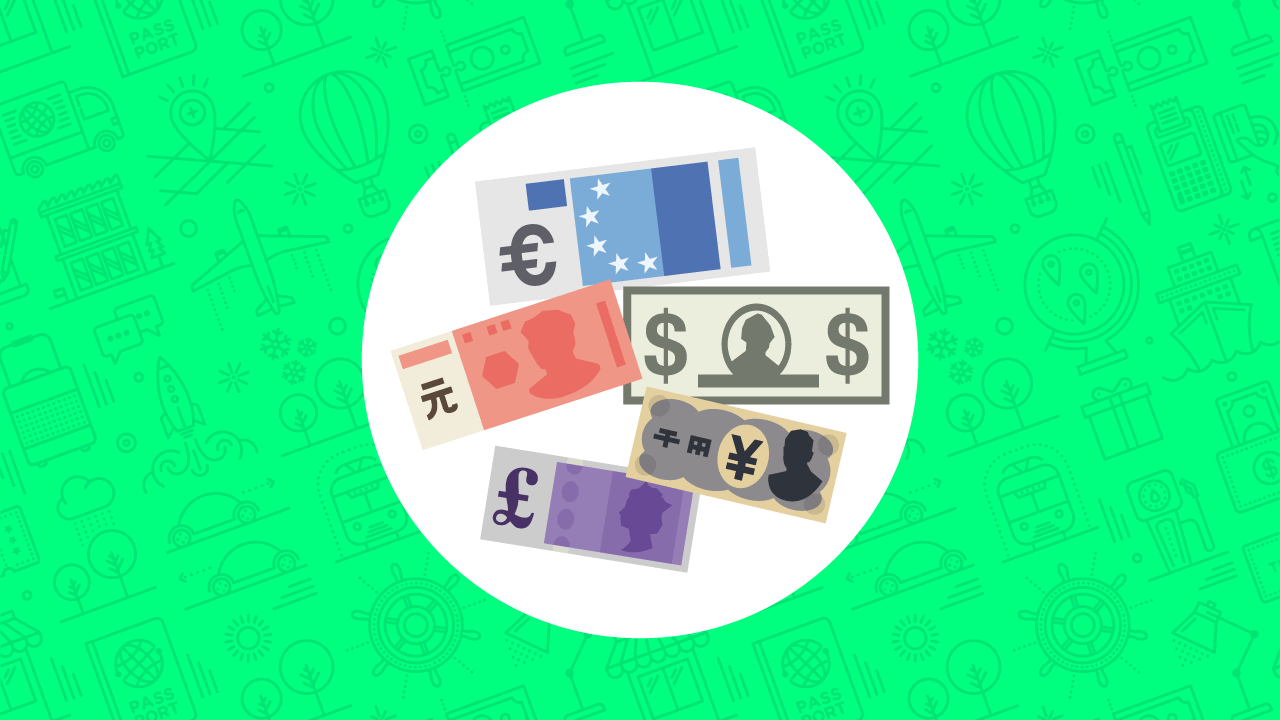
If you’re about to jet-off overseas, then it’s likely that you are going to be using a currency other than the US dollar. Sure, you might decide to bring a small lump of dollars with you, but what happens when you require additional cash when you arrive? In most cases, you have two options.
You can either withdraw cash from a local ATM in the country’s native currency, or you can use a traditional debit/credit card in-store. Each option comes with its pros and cons, so it’s best that we breakdown the types of charges that you will typically pay.
ATM Withdrawals
If you are using a conventional card issued by a US bank, then you will all-but certainly be charged ATM fees when traveling overseas. First and foremost, you are likely to be charged an ATM fee by the specific machine that you withdraw from. This can vary quite considerably depending on the location that you are in. However, in most cases, this will be a fixed-fee, which is displayed on-screen before you make a withdraw. Irrespective of the type of card you are in possession of, this particular ATM fee cannot be avoided.
In terms of what your bank is likely to charge you, this will once again vary depending on the issuer. In most cases, this will be a fixed withdrawal fee, plus a foreign transaction fee. The latter will average between 3%-5%, which is very expensive.
Let’s take a look at how the above charges work with a quick example.
💳 You visit the UK and decide to withdraw the GBP equivalent of $500 from an ATM.
💳 The local ATM charges you the GBP equivalent of $5 for using the machine.
💳 Your US bank charges you a flat ATM fee of $5.
💳 Your US bank also charges you a foreign transaction fee of 4% – amounting to $20.
As you will see from the above example, your $500 ATM withdrawal has resulted in three individual charges. This covers the local ATM charge, the fixed withdrawal fee charged by your US bank, and the foreign transaction fee charged by your bank. All-in-all, your $500 ATM withdrawal came with fees of $5, $5, and $20 – amounting to a whopping $30! In comparison to the amount you took out, this represents a real-term fee of 6%.
In-Store Transactions
When we refer to in-store transactions, we are talking about purchases that are physically made with your card. For example, this could see you pay for your restaurant bill with your card, or pay for a train ticket by inserting your card into an automated ticket machine. Essentially, this covers all physical purchases apart from ATM withdrawals.
In terms of the underlying charges that you should expect, this will vary slightly from a typical ATM withdrawal. Firstly, you won’t need to pay a local withdrawal fee, as you are not using an ATM. Moreover, you won’t need to pay a fixed withdrawal fee to your US bank, as once again, you’re not using an ATM.
However, what you will need to pay is a variable foreign transaction fee. In fact, it is estimated that 91% of US banks charge a foreign transaction fee when you use your card to pay for things overseas, and this typically averages 2-3%. As such, spending the local currency equivalent of $100 in a restaurant will cost you around $2-$3 in fees.
What exchange rate do I actually get when using my card overseas?
On top of the specific fees charged by your US bank, you also need to make some considerations as to what exchange rates you are actually getting, and how the bank calculates it. Otherwise, you’ll end up using your card overseas and not knowing how much you are paying in real-terms. Here’s the low-down.
💸Let’s say that you are overseas in Germany, which uses the Euro (EUR).
💸Let’s also say that 1 USD = 1.2 EUR
💸This means that a 120 EUR payment would amount to $100
💸 But wait! This is the exchange rate that banks are able to get because they execute trillions of dollars worth of cross-border transactions with other financial institutions
💸 As such, the bank will add on a foreign transaction fee, typically amounting to 2%-3%
💸 Based on a mark-up of 3%, the exchange rate that you get personally is actually 1.164 EUR to the USD!
Tips to using no foreign transaction fee credit cards wisely
So now that you know just how expensive it can be when accessing cash while traveling, let’s explore what you need to know before using your no foreign transaction fee credit card overseas.
Tip 1: Use your credit card wherever you can
Before you depart, you need to remind yourself that you should use your no-fee credit card at every possible opportunity. Whether you are paying for a single cup of coffee, train tickets, tours, dining or gifts – if the merchant in question accepts credit cards – use it!
The reason for this is that you want to avoid using an ATM machine. Not only will you need to pay a local fee, but you are likely to be charged a cash advance fee by your credit card provider.
Tip 2: Withdraw the maximum from an ATM
While you should always strive to pay for things with your credit card when overseas, you will still need to have some cold-hard cash to hand. This will be required in the event that your respective purchase cannot be made with a credit card. Nevertheless, when it comes to using a local ATM machine, you should always withdraw the maximum amount possible.
This is for two key reasons. Firstly, if the local ATM machine charges a one-time fixed fee, you will need to pay this every time you make a withdrawal. Secondly, although your no foreign transaction fee might come with a 0% mark-up on physical purchases, your US bank might still charge a fixed ATM fee – as they do domestically. Ultimately, by making small, frequent withdrawals, you will be accustomed to fees every time, so try to take out the largest amount possible.
Tip 3: Always withdraw/pay in local the local currency
If you’ve ever used your credit card overseas before, then you’ll likely know the drill. Let’s say that you ask to pay your $50 restaurant bill with your credit card, which is the local equivalent of 40 EUR. The waiter then enters the amount into their credit card terminal, and asks whether you would “like to pay in Euros or US dollars”.
Although you might think that it is easier to keep track of your spending if you opt for US dollars, you must avoid doing this at all costs. Irrespective of where you are, always pay in the local currency. The main reason for this is that if you choose US dollars, you will be engaging in something called a ‘Dynamic Currency Conversion’.
In layman terms, the local bank that facilitates the transaction will use their own foreign exchange rate, which will always be significantly higher than what your US bank charges!
Tip 4: Set-up an automatic debit payment to clear your overseas spending in full
This final tip is potentially the most important. In a nutshell, as you rack up spending on your credit card when overseas, your purchases will be applied to your next monthly statement. When you do receive the statement, and you proceed to pay it in one hit, then you will avoid paying any interest.
On the contrary, by just paying the minimum, interest will be applied. The best way to ensure that you remain interest-free is to set up an automatic debit agreement via your checking account before you leave. You will also need to log in to your credit card account portal and instruct the issuer to take the full statement amount from your card when the payment is due.
The Pros
- Avoid paying any foreign exchange fees when using your card overseas
- Always have financial back-up when traveling
- Pay no interest when clearing your monthly balance in full
- Fraud protection in the event your card is used without your permission
- Transparent way to track your overseas spending
- Some cards come with 0% interest on purchases
The Cons
- ATM withdrawals still expensive as you will pay a cash advance fee
- 0% rates typically offered to people with good or excellent credit
Criteria used to rank the best credit cards
❓ 0% foreign transaction fees
❓ If possible, no foreign ATM charges from the US card issuer
❓ 0% rate available in all overseas countries
❓What credit limit is available
❓ Standard APR rate charged
❓ Whether the card comes with travel rewards
❓ Whether or not the card offers an introductory offer of 0% on purchases
❓ Eligibility requirements
In our opinion, there is no other credit card currently in the market that can service your traveling needs as effectively as the Chase Sapphire Preferred Card. First and foremost, the card does, of course, come with 0% foreign transaction fees when you physically use the card overseas. Not only this, but the card also comes with a number of travel-related rewards. Initially, this starts with an introductory offer of 60,000 points when you spend $4,000 within the first 3 months. This amounts to $750 in travel spending. As such, if you plan in advance and you are able to meet the $4,000 requirement, you can use the $750 to help pay for your flights and hotels. Furthermore, as a specialist travel credit card, the Chase Sapphire Preferred Card will also give you 2 points for every dollar that you spend on travel and dining. Regarding the latter, this means that every time you use your card to pay for restaurant bills when overseas, you will receive 2x points! Anything outside of this and you will get the standard offering of 1 point per dollar. In terms of the financials, the card will cost you $95 in annual fees. Moreover, you will need to pay a standard APR rate of between 17.99% and 24.99% if you are unable to clear your monthly balance in full. [one_half] Key Points: 💳 0% foreign transaction fees 💳 60,000 points when you spend $4,000 in the first 3 months 💳 60,000 points equates to $750 in travel rewards 💳 2 points per dollar on travel and dining 💳 1 point per dollar on everything else 💳 APR rate of between 17.99% to 24.99% once the offer expires 💳 Annual fee of $95
As is the case with the Chase Sapphire card, the Capital One Venture Rewards credit card offers the ultimate balance between 0% foreign transaction fees and travel-related perks. In terms of the rewards, all new customers will be given an introductory reward of 50,000 points when you spend $3,000 on purchases within the first 90 days. In real-world terms, this amounts to $500 worth of travel spending! Outside of the introductory offer, you will get 2x points on all purchases made both domestically and internationally. However, if you are able to book your hotels via Hotels.com, you will get a whopping 10x points. Moreover, if you are required to go through a TSA PreCheck – which can cost as much as $85-$100, then Capital One will refund you the fee. Although the card does normally come with an annual fee of $95, this will be waived for the first year. In terms of the APR rate, this will vary between 17.99% and 25.24%, depending on your credit rating. Take note, you are likely to need a FICO score of at least 680 to be approved. [one_half] Key Points: 💳 0% foreign transaction fees 💳 50,000 intro points when you spend $3,000 within 90 days 💳 Intro offer amounts to $500 in travel spending 💳 $95 annual fee, although waived in year one 💳 10 x points when using the card at Hotels.com 💳 APR rate of between 17.99% and 25.24% once offer expires
Although a lot of people are put off by the $450 annual fee, we still think that the Chase Sapphire Reserve is one of the best no foreign transaction fee credit cards in the market. Firstly, Chase will give you $300 in travel rewards when you first sign-up, as well as a TSA Pre-Check refund. This is repeated every four years, too.
On top of getting 0% fees when using your card overseas, you will also be accustomed to a number of rewards. For example, you’ll get 3 points per dollar every time you use your card on dining or travel purchases – both domestically and overseas. When using your card overseas outside of the dining/travel category, you’ll still get an uncapped 1 point per $1.
In even better news, you can use your accumulated rewards at a rate of 1.5 cents/point when booking hotels through the Chase website. Take note, if you do want to obtain the Chase Sapphire Reserve credit card, you will need to have an excellent credit rating. Moreover, you also need to consider the 18.99%-25.99% variable APR rate if you don’t settle your monthly balance in full, as well as a rather expensive 26.99% APR on cash advances.
[one_half] Key Points: 💳 $0 foreign transaction fee 💳 $450 annual fee 💳 $300 in travel credit every four years 💳 TSA PreCheck refund (worth $85-$100) 💳 Excellent credit score required (720+) 💳 3 points per $1 for travel and dining purchases 💳 1 point per $1 for everything else
Much like in the case of the Chase Sapphire Reserve, the American Express Platinum Card comes with a super high annual fee of $550. However, don’t let this immediately scare you off, as the credit card comes with a significant amount of travel-related perks.
First and foremost, the card comes with 0% foreign transaction fees, which is a good start. Next, you will get an introductory offer of 60,000 points when you sign-up. To claim the points, you will need to spend $5,000 within the first 90 days. After this, you will get 5x points per dollar when you use your card to pay for flights (via Amex Travel website), as well as hotels.
Everything else that you book through the Amex Travel platform will yield you 2x points per dollars. However, the benefits do not stop there! The American Express Platinum Card will also offer you free access to a number of 5-star rated airport lounges, a $200 airline incidental fee credit, a refund on TSE Pre-Check charges, and a $100 credit to be used on hotels via the Hotel Collection website!
As great as the above benefits are, it is important to note that the card is known as a ‘Charge Card’, This means that you cannot roll your balance over to the following month. Instead, you’ll need to clear your statement in full each and every month. Nevertheless, this is advised anyway as it means you will always avoid paying interest!
[one_half] Key Points: 💳 $0 foreign transaction fee 💳 $550 annual fee 💳 60,000 bonus points when you spend $5,000 in the first 90 days 💳 Heaps of travel-related perks such as free lounge access, airline cover, $100 hotel credit 💳 5x points when booking flights and hotels via Amex Travel 💳 2x points on everything else booked via Amex Travel 💳 You must pay your balance in full every month
It appears that the team at American Express is really keen to dominate the travel-related credit space, as the provider’s Gold Card also makes our list. This particular no foreign transaction fee credit card is ideal if you find yourself spending a lot of money on dining when you go overseas.
Regardless of where you go, you will always get 4x points when you use your American Express Gold Card at restaurants. You also get this rate at US supermarkets – up to $25,000 in spending per year. On top of getting rewards when dining overseas, you also get 3x points when you use the card to book flights via the Amex Travel store, and 1x on everything else, per dollar.
It is also important to note that all news customers will get 35,000 bonus points when you spend $2,000 within 90 days of receiving the card. As such, it would be wise to book all of your flights and hotels with the card so that you also get the additional reward points.
The American Express Gold Card also comes with $120 in annual dining credit, and $100 in annual airline credit. Finally, and much like in the case of its Platinum counterpart, you need to settle your monthly balance in full. However, there is no annual fee to contend with, subsequently saving you the $550 fee that comes with the Platinum Card!
[one_half] Key Points: 💳 $0 foreign transaction fee 💳 No annual fee 💳 35,000 bonus points when you spend $2,000 in the first 90 days 💳 4x and 3x points when booking dining and flight/hotels, respectively 💳 Lots of travel perks like hotel and flight credit – every year 💳 You must pay your balance in full every month
FAQs
What is a foreign transaction fee?
Will I get free ATM withdrawals when I use a 0% foreign transaction fee credit card?
When using my credit card in-store, should I pay in US dollars when given the option?
Should I use my no foreign transaction credit card to book my flights and hotels?
Will I need to pay a fee to get a no foreign transaction credit card?

